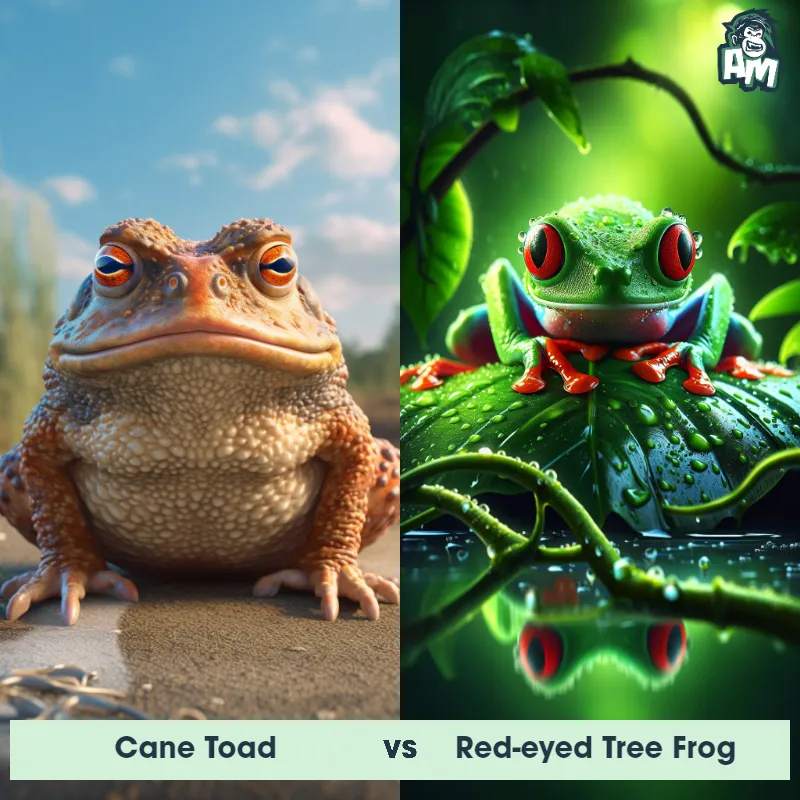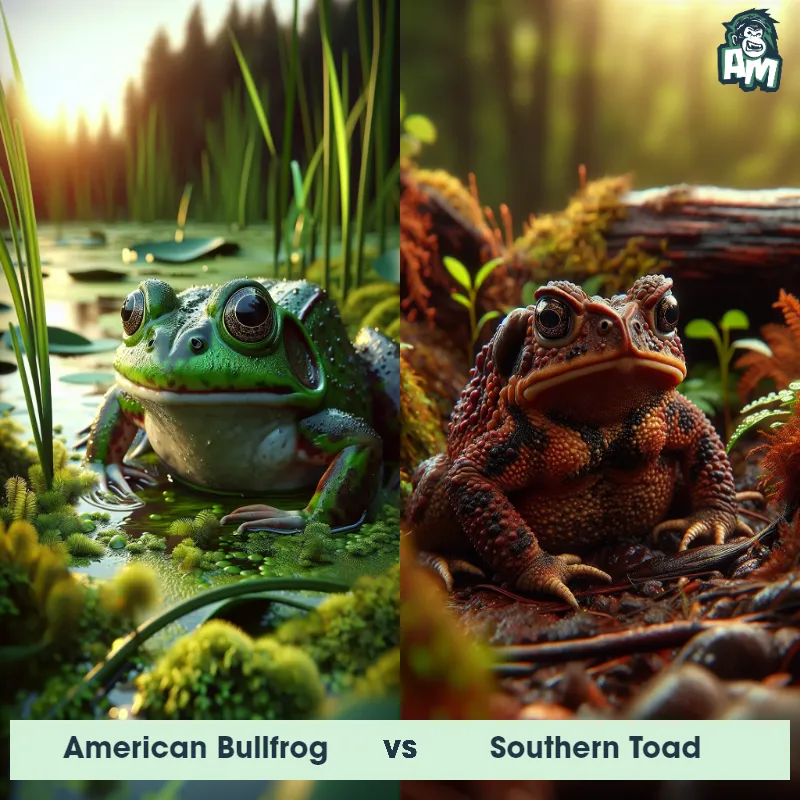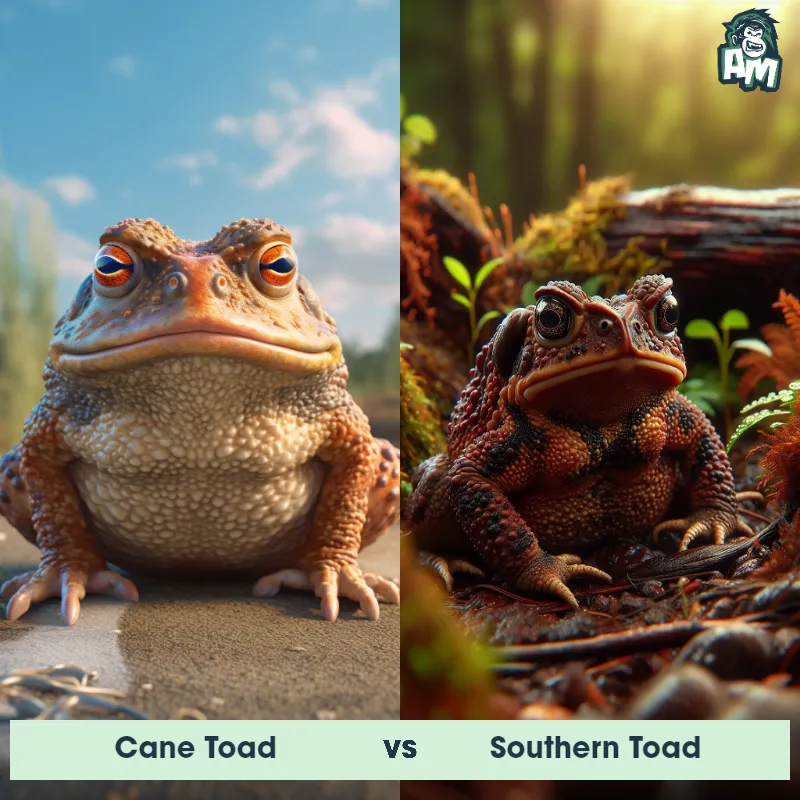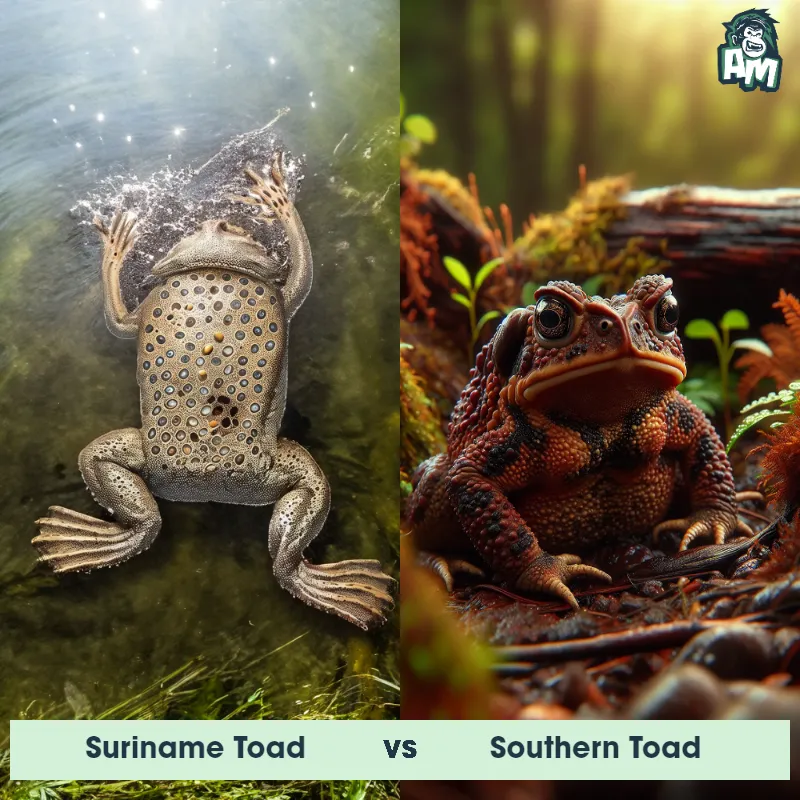Southern Toad vs Cane ToadSee Who Wins

Welcome to tonight's matchup between the Southern Toad and the Cane Toad! Both of these amphibians are ready to showcase their skills in the ring tonight. It's sure to be an exciting fight, so let's get ready to see who will come out on top.
Contender 1: Southern Toad
The Southern Toad, also known as Bufo terrestris, is a stout-bodied amphibian with dry, warty skin and prominent ridges extending down its back. They typically have a brown or grayish coloration with dark spots and a cream-colored underside. Southern Toads have distinctive cranial crests above their eyes and elongated parotoid glands located behind their eyes. These toads are found in a variety of habitats, including forests, marshes, and urban areas.
Fun Fact: Southern Toads have a unique defense mechanism where they release a toxic substance from their parotoid glands when threatened by predators, causing irritation to mucous membranes and potentially discouraging the predator from attacking.
Contender 2: Cane Toad
The Cane Toad, also known as the Bufo marinus, is a large, terrestrial amphibian that can grow up to 9 inches in length. They have dry, warty skin that is typically brown or gray in color, with a creamy underbelly. Cane Toads are known for their distinctive parotoid glands located behind their eyes, which secrete a toxic substance that can be harmful to predators. They are native to Central and South America but have been introduced to other parts of the world, including Australia, where they are considered an invasive species.
Fun Fact: Cane Toads were introduced to Australia in the 1930s in an attempt to control the population of beetles that were damaging sugar cane crops, but the plan backfired as the toads had no natural predators and began to spread rapidly, causing harm to native wildlife.
Matchup Stats
| Southern Toad | Cane Toad | |
|---|---|---|
| Size | 2-4 inches (5-10 cm) | Up to 9 inches (22.86 cm) |
| Weight | 1-3 ounces (28-85 grams) | Up to 4 pounds (1.81 kg) |
| Speed | 4mph (6km/h) | Speed: 5 mph (8 km/hr) |
| Key Strength | Camouflage and toxin secretion | Parotoid glands secrete toxic substance |
| Biggest Weakness | Slow movement | Slow movement |
Current Votes
Southern Toad vs Cane Toad
See Who Wins
View More Matches
Looking For More?
Similar Matches
Scientific Stats
| Southern Toad | Cane Toad | |
|---|---|---|
| Scientific Name | Bufo terrestris | Bufo marinus |
| Family | Bufonidae | Bufonidae |
| Habitat | Forests, marshes, urban areas | Terrestrial |
| Geography | Southeastern United States | Native to Central and South America, introduced to other parts of the world |
| Diet | Insects, worms, small invertebrates | Insects, small animals, plants |
| Lifespan | 4 years - 10 years | 5 years - 10 years |
Key Differences between Southern Toad and Cane Toad
- Behavior: Southern Toads are primarily terrestrial and prefer moist environments, while Cane Toads are more aquatic and can be found near water sources such as ponds, lakes, and streams.
- Distribution: Southern Toads are native to the southeastern United States and parts of Central America, while Cane Toads are native to Central and South America but have been introduced to various parts of the world as invasive species.
- Parotoid Glands: The parotoid glands behind the eyes of Cane Toads are larger and more pronounced compared to the smaller parotoid glands of Southern Toads.
- Cranial Crests: Southern Toads have distinct smooth or slightly raised cranial crests running along the top of their heads, while Cane Toads lack prominent cranial crests.
- Size: Southern Toads are typically smaller than Cane Toads, with adult Southern Toads ranging from 2 to 3.5 inches in length while adult Cane Toads can reach up to 6 inches or more.
- Coloration: Southern Toads have darker, more uniform coloring with shades of gray, brown, or olive green, whereas Cane Toads have a bumpy, brown or grayish skin with distinct marbling or mottling patterns.


























